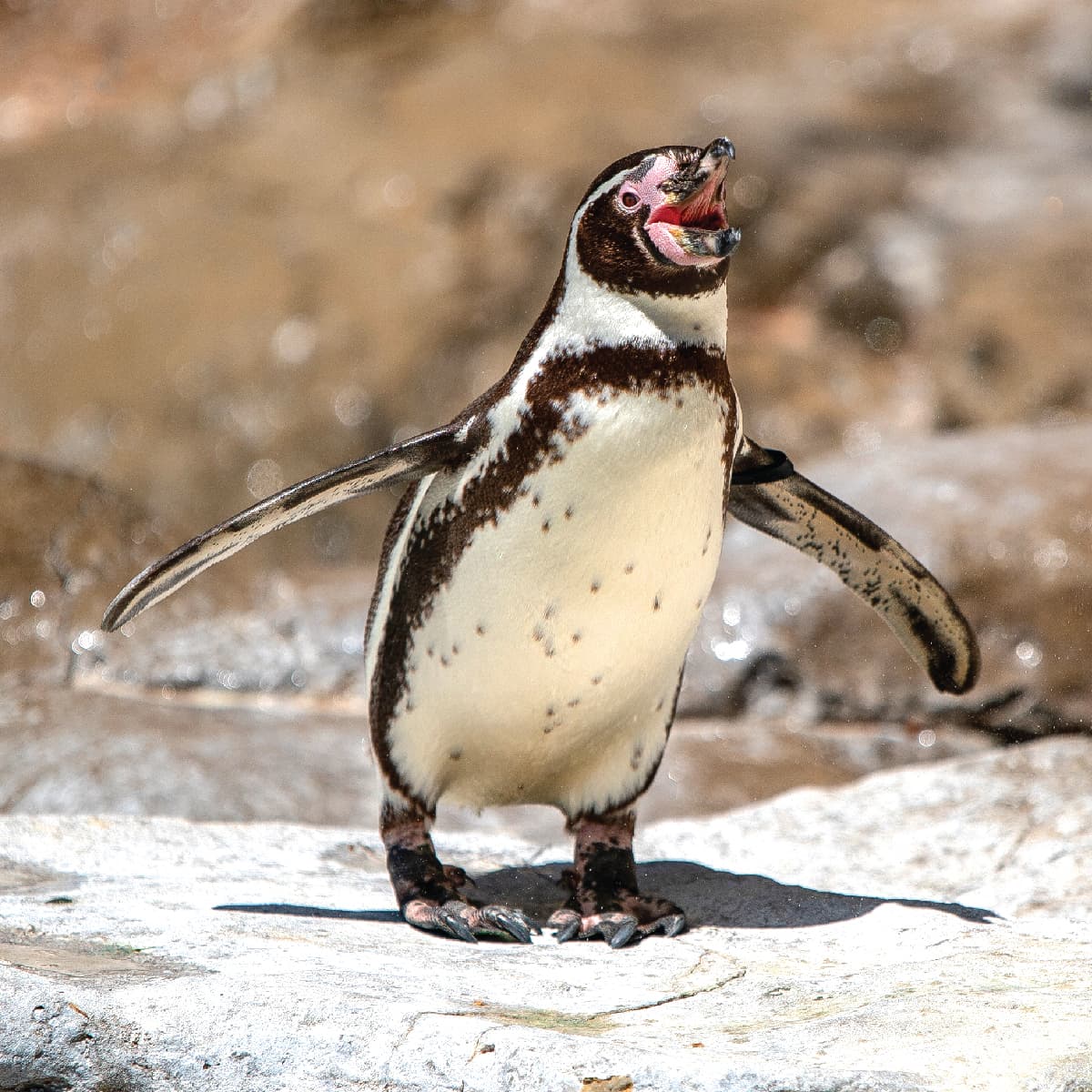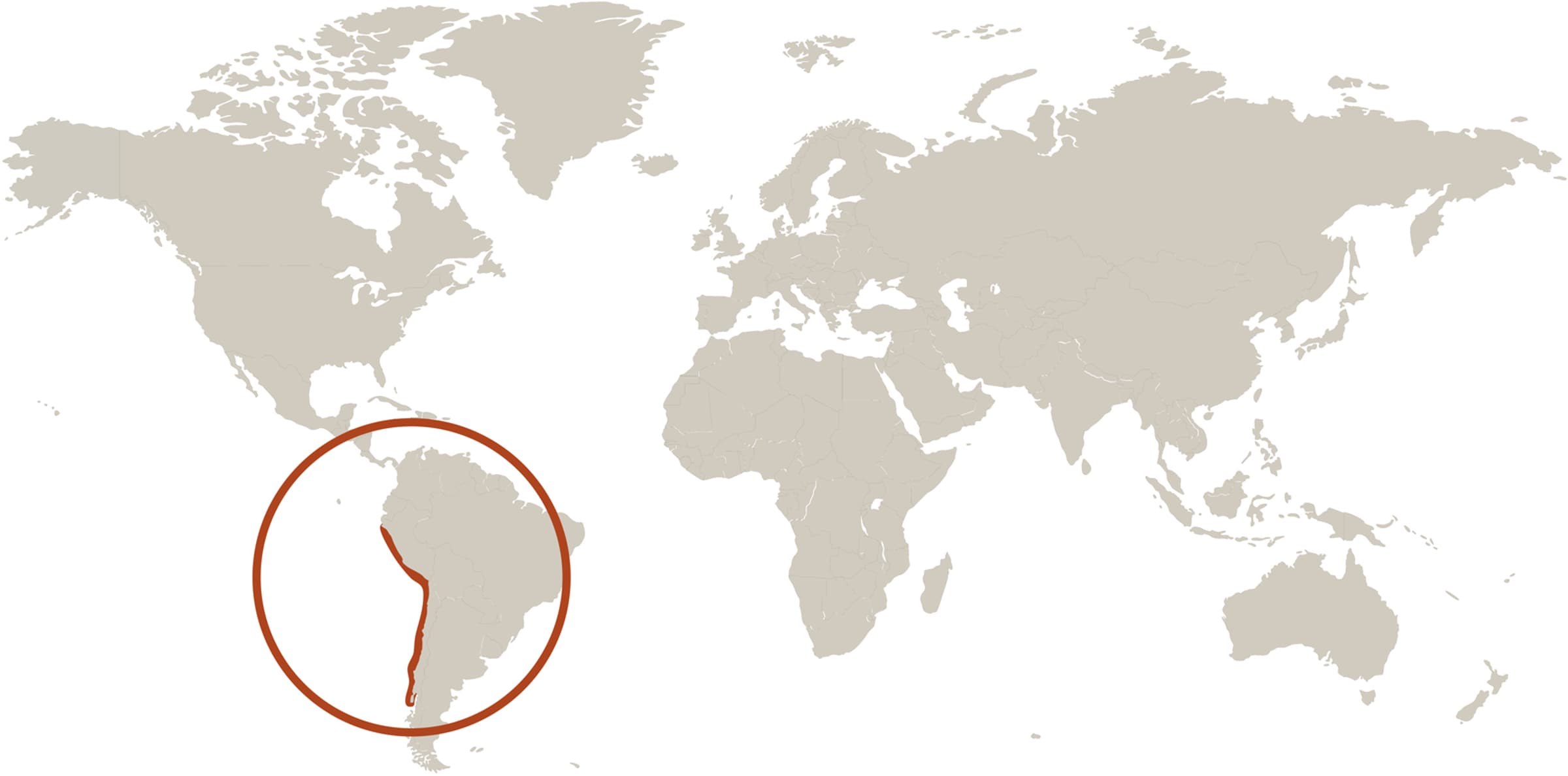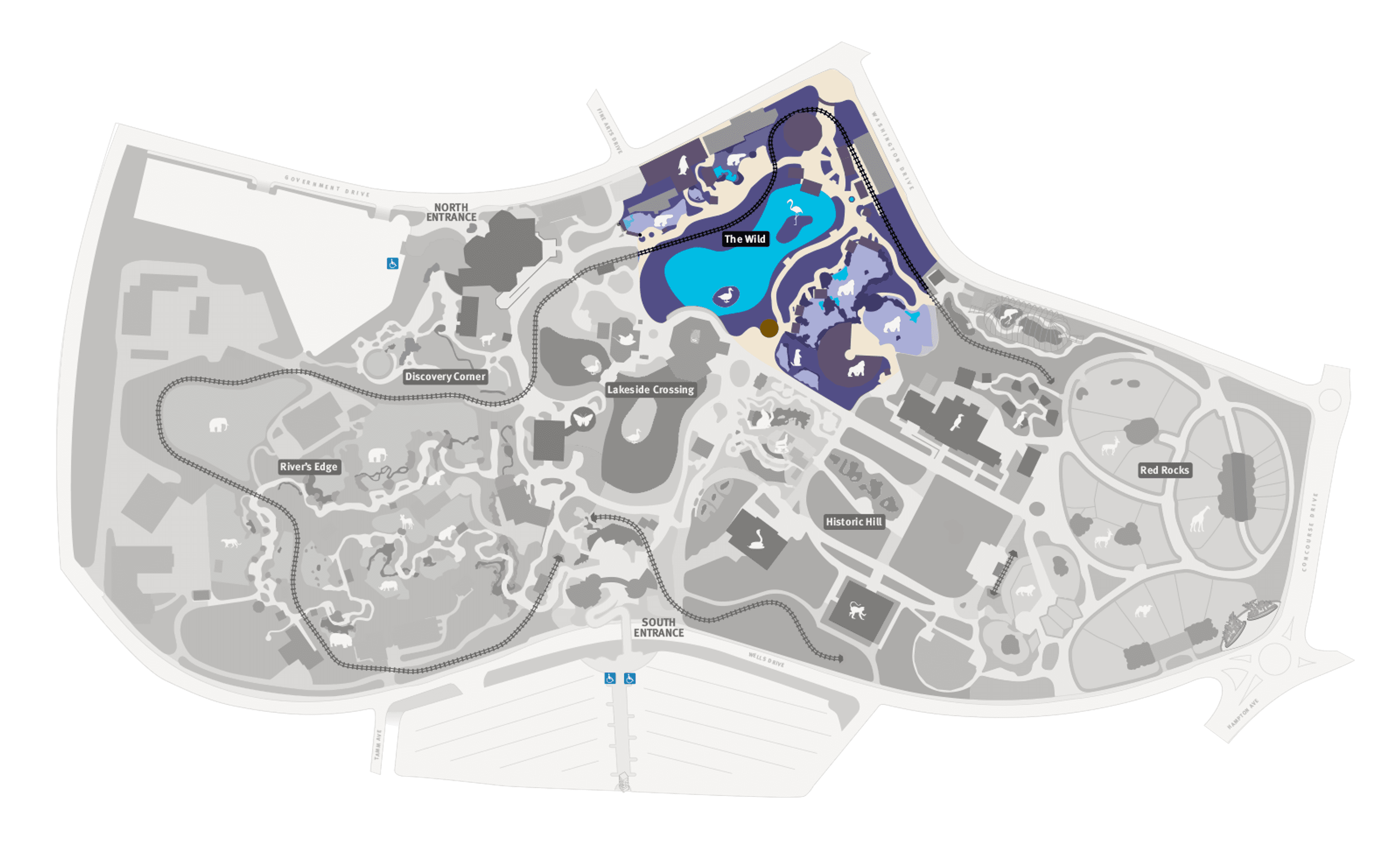
Humboldt Penguin
Spheniscus humboldti
Did you know?
- Humboldt penguins are a part of the Spheniscidae family, which they share with other penguins.
- They were named after naturalist Alexander von Humboldt, just like the chilly Humboldt Current that runs along their natural habitat.
- They live on the shorelines of Peru and Chile.
- They create nests in layers of dried guano (poop) left by seabirds!
- A female will lay two eggs per clutch.
Penguins
All penguins have torpedo-shaped bodies designed for moving efficiently through water. They use their wings to help them swim and their webbed feet to steer underwater. Their bones tend to be denser than those of flying birds, and the extra weight helps them dive to greater depths. A special gland removes salt from their bodies after they swallow saltwater. Penguin eyes are sensitive to the colors of the sea: violets, blues, and greens. They have a second transparent eyelid, which serve as "goggles" that protect their eyes and allow them to see while submerged. They also have unique coloration that helps them camouflage in the water: When seen from below, their white bellies blend with the light cast on the ocean surface. When seen from above, their black backs blend with the darkness of the ocean depths.
Young and Family
Humboldt penguins have a breeding season in the fall and in the spring. The male arrives at a site a few days before the female and prepares the nest burrow. He uses his wings and feet to push and mold the guano into the shape he wants, then gathers soil, rocks, and sometimes grasses to complete the nest. This will become the place where the female will lay her eggs.
After mating, the female lays two white eggs. Both parents take turns sitting on the eggs until they hatch. Incubation lasts about 39 days. Once the chicks emerge, both male and female parents will help feed them
Threat Level
- Unknown
- Common
- Near Threatened
- Threatened
- Endangered
- Critically Endangered
- Extinct in the Wild
Threatened
The Humboldt Penguin faces a high risk of extinction in the wild.
Range
Coastal regions of Peru and Chile
Habitat
Open ocean, rocky shorelines

We care about Humboldt penguins
The Humboldt penguin population has declined significantly in recent decades, and this species faces an uncertain future brought about by emerging threats that imperil their very existence. These include the harvest of guano for use as an organic fertilizer, underwater natural gas pipelines that emit toxic seepage into the water, recurring El Nino Southern Oscillations and vulnerability to predators. Disruption of the fragile ecological balance of Humboldt penguins’ region is another large threat to the species. Peru’s largely unregulated fishing industry not only removes the Humboldts’ food supply, but also places them at risk of entanglement in fishing nets.
The Saint Louis Zoo has been working to help preserve Humboldt penguins in Peru for over 20 years. Zoo staff participate in the annual counts of Humboldt penguins along the Peruvian coast. They have also acted as international observers in several sustainable harvests of guano in the penguins' largest breeding colony in Punta San Juan, Peru. Additionally, the Saint Louis Zoo’s WildCare Institute currently supports research staff at Punta San Juan.
Lastly, we support Humboldt penguins through the Association of Zoos and Aquariums Species Survival Plan, a program that works to increase the number of healthy captive Humboldts. Learn more about how we are helping Humboldt penguins.
Find this animal in The Wild

SAINT LOUIS ZOO ZONE
The Wild
You’ll find penguins, puffins, grizzly bears, gorillas, chimpanzees, to name a few. And while visiting, you can take a ride on the Conservation Carousel or hop aboard and ride the Zooline Railroad. There are also gift shops and eateries you can enjoy.

